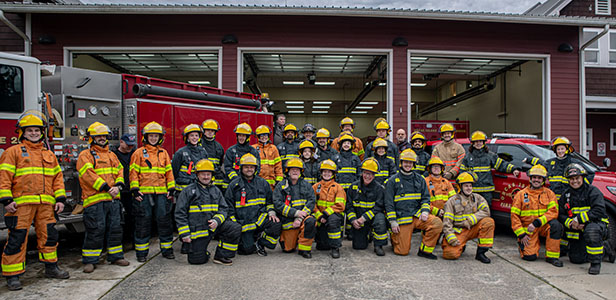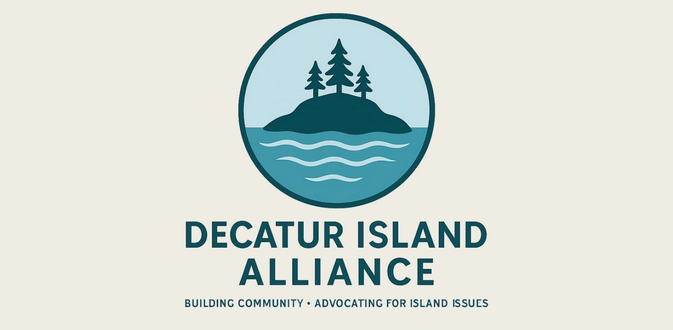Changes for Fare Simplification Previewed
“Recommendation 6. WSF should streamline Sidney fares by establishing a single Sidney‐Anacortes fare with the ability to stop in the San Juan Islands and by eliminating the separate commercial and RV fares. No legislative action is required to implement this recommendation.”
From the Joint Transportation Commission Study on Fare Media Final Report Executive Summary, released Jan. 28, 2012
The above is one of 10 recommendations (see below) made in the draft final report of the Cedar River Study Group, presented to the State Transportation Commission on Jan. 17 and revised into a final draft issued on Jan. 27.
State Transportation Commissioner Tom Cowan of Lopez Island, along with fellow Commissioner Dan O’Neal of Shelton and Robert Cromwell of the Bainbridge Island Ferry Advisory Committee, served on the committee to advise the study process. The Committee also included the four legislators that make up the Joint Transportation Committee (JTC), a representative from the Governor’s office and a representative from Washington State Ferries (WSF).
The charge to the study was to advise the legislature as it “seeks a fare payment approach that accommodates the new ferry reservation system and will work with a demand management pricing system. The objective is for a simpler fare structure [in the San Juans alone there are 403 different fares] and for the fare media to provide interoperability with regional payment methods. This study will involve the JTC, the Transportation Commission, WSF, and others as appropriate.”
(From www.wstc.wa.gov)
The Final Report has been accepted by the Legislature’s Joint Transportation Committee, who may revise or adopt it.
Last weekend, Cowan spoke to Orcas Issues regarding the study process and the 10 recommendations on ways to simplify fares and payment methods; and evaluating alternative fare media for the Washington State Ferries (WSF).
Cowan opposed Recommendation 6 noted above, saying that while the recommendation was simpler, it would “dramatically increase the fares of those traveling to Sidney from the San Juans.” He also advised the Committee repeatedly that reservations is a very controversial subject in the San Juans.
Cowan agreed with the recommendations to change the medium for fare ticketing; he noted that they will take time, but should be installed sooner than 2018, as recommended in the report.
Currently, ferry travelers use the Wave2Go automatic payment system; other state fare systems, such as the Evergreen Point and Tacoma toll bridges use the ORCA and Good To Go! systems which uses an individual account-based payment and transponders, and doesn’t require that toll booths be staffed by personnel.
The ferry system needs to have an account-based system implemented sooner than 2018. “We can’t wait until 2018,” said Cowan.
“Wave2Go is an inflexible system that the contractor doesn’t support adequately. We need to move on.” There are already systems designed for payment by cell phone for goods and services and the ferries should be open to new technologies like that, Cowan notes.
The fare simplification charge will enable the ferries to use a future software system more efficiently, Cowan says. He hopes that the Legislature will move on some of the recommendations as rapidly as possible: the expense of implementation “will only get more expensive.”
Cowan did not support the recommendation to use the Good to Go! payment method as the exclusive option for fares on the Southworth-Vashon-Fauntleroy route and possibly other routes that will not have a full reservation system. He said “It requires more study because there would be no charge for passengers, which means that vehicle rates will increase 30 percent.”
He also recommended that fares be figured by measuring and charging vehicles per foot length. “I’ll take some heat for this. It will be controversial, but it will be fair. Right now we have a system that’s not very fair. You’re paying as much for a Prius at 14 ft. 3 in. as you are for a 22-foot truck.”
While he says that the study is “a good report to use as a blueprint,” Cowan says that policy and budget ramifications will have to be addressed by the Legislature.
The fare simplification and revision study “did not have a good public process: it was set up by the legislature and was under the radar of most citizens and user groups,” said Cowan. “I want to emphasize before any of this is finally decided and implemented that it needs to be reviewed by the Ferry Advisory Committees, the FAC on tariffs, the FAC Executive Committee the various user group. I put in my comments that the public has not yet had the opportunity to participate.”
Cowan was appointed to the Transportation Commission by Governor Gregoire in February, 2011. He describes the interworkings of the Transportation Commission, Washington State Ferries and the Ferry Advisory Committees (FAC) as “very complex.”
He adds, “The FACs play a very important role in advising on schedules and other operational matters as well. WSF makes fare recommendations, as does the Ferry Advisory Committee on Tariffs.
Joint Transportation Committee Final Report Recommendations:
- Recommendation 1. WSF and WSTC should continue to modify their fare policies to bring the fare structure in alignment with legislative fare policies and with legislative direction to use adaptive management practices.
- Recommendation 2. WSTC annual market surveys should include questions on customer households and the household’s likely response to fare changes.
- Recommendation 3. In the long‐term, WSF’s fare collection system should be adapted to the needs of its travel sheds/routes and its customers with consideration of two fare collection systems:
1. Account –based system. Wave2Go should be replaced with an account‐based fare system that offers customers a variety of fare media products and interoperable payment options through Good To Go!, ORCA, and emerging payment technologies.
2. Good To Go! as the Only Payment Method. Some routes, particularly those without vehicle reservations, may best serve their customers by using the Good To Go! tolling system exclusively. - Recommendation 4. WSF’s vehicle fare structure should be based on a per foot charge, which will require the installation of automatic vehicle length measuring devices at an estimated FY 2012 cost of $0.9 million. The legislature should consider providing an appropriation for this amount in the 2011‐13 biennium.
- Recommendation 5. WSF should reinstate discounted joint passes with transit agencies on routes with significant numbers of commuter. No legislative action is required to implement this recommendation.
- Recommendation 6. WSF should streamline Sidney fares by establishing a single Sidney‐Anacortes fare with the ability to stop in the San Juan Islands and by eliminating the separate commercial and RV fares. No legislative action is required to implement this recommendation.
This recommendation would eliminate 73 fares and would provide international tourists the opportunity to stop in the San Juan Islands. - Recommendation 7. WSF should allow its passenger multi‐ride cards, and if operationally feasible its vehicle multi‐ride cards, to be purchased and loaded on ORCA cards. Implementation of this recommendation is anticipated to cost $0.3 million in FY 2012 dollars for ORCA/Wave2Go integration, which the legislature should consider appropriating in the 2011‐13 biennium.
- Recommendation 8. WSF should implement Good To Go! as a form of payment at vehicle tollbooths. Implementation is anticipated to cost $2.2 million in FY 2012 dollars, which the legislature should consider appropriating in the 2013‐15 biennium.
Phase Two Recommendations for after 2018:
- Recommendation 9. WSF should replace Wave2Go with an account‐based fare system in the 2018 and beyond time period.
- Recommendation 10. WSF should consider Good To Go! as the exclusive payment option for fares on the Southworth‐Vashon‐Fauntleroy route (and possibly for other routes that will not have a full reservation system) in the 2018 and beyond time period.
To read the full report, go to www.leg.wa.gov/JTC/Fare%20Media/FareMediaFinalReportJan2012.pdf
To read the Executive Summary of the report, go to www.leg.wa.gov/JTC/FareMediaFinalReportExecutiveSumm012412.pdf
Also at the Jan. 17 Transportation Commission meeting, a second Cedar River study evaluated the use of liquefied natural gas as a ferry fuel.
In addition, a report was given on the status of implementing a new, small car fare category for vehicles under 14 feet, a change the commission enacted as part of its October 2011 fare adjustment; and another report was given on the 144-car ferry construction program.
The Transportation Commission two-day agenda (Jan. 17 and 18) also included the following items, not all of which were addressed because of the heavy snow in Olympia those days.
- a tolling update, including the latest traffic and revenue report for the Tacoma Narrows Bridge.
- the I-5 Electric Highway
- Aviation economic impact study
- Commute Trip Reduction
- an overview of the Grey Notebook, WSDOT’s quarterly performance measurement report.
- a briefing on WSDOT’s project prioritization process, discuss the Governor’s proposed transportation budget and revenue proposal,
- review the recommendations of the Governor’s Connecting Washington Task Force on long-term funding for transportation in the state.
**If you are reading theOrcasonian for free, thank your fellow islanders. If you would like to support theOrcasonian CLICK HERE to set your modestly-priced, voluntary subscription. Otherwise, no worries; we’re happy to share with you.**







